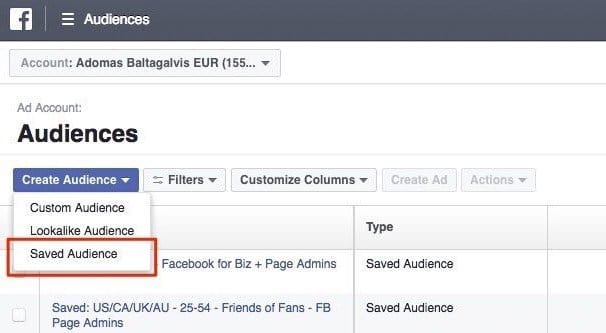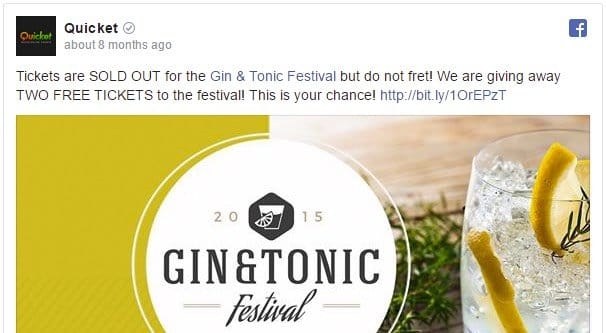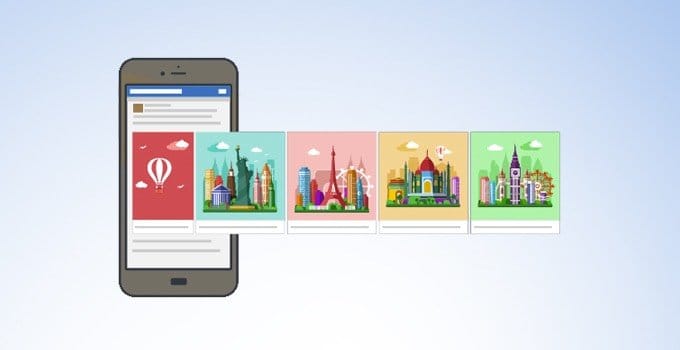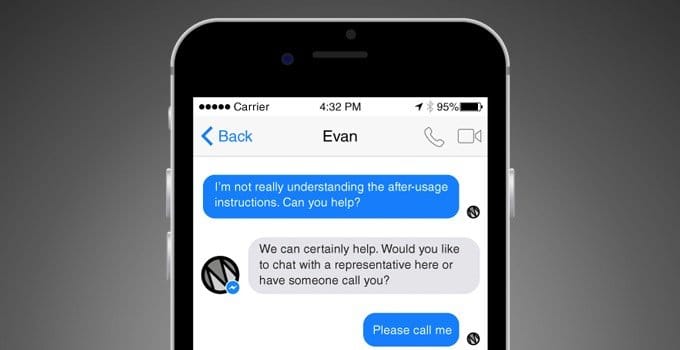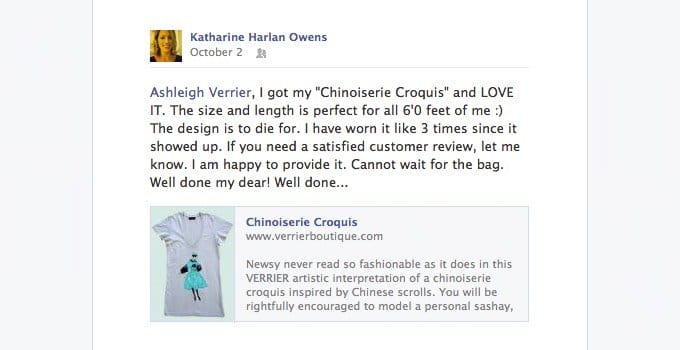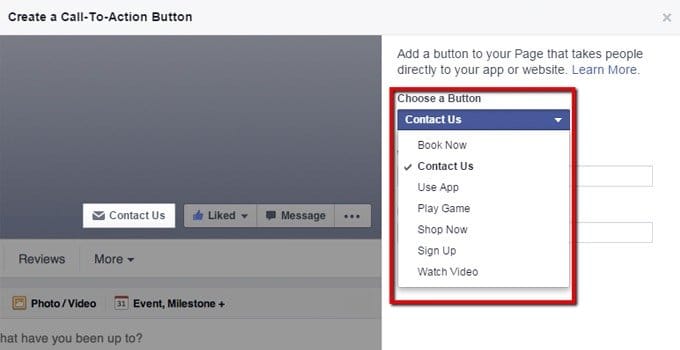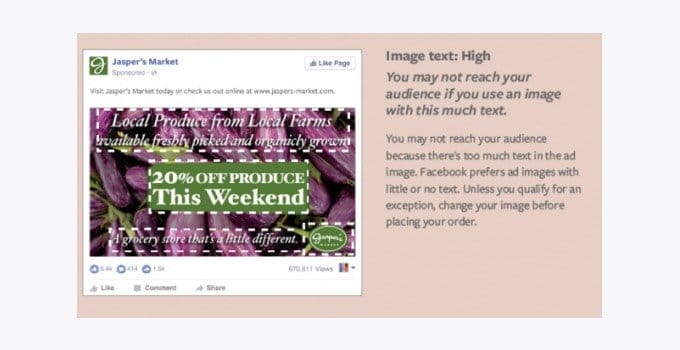 Written by ContentPowered.com
Written by ContentPowered.com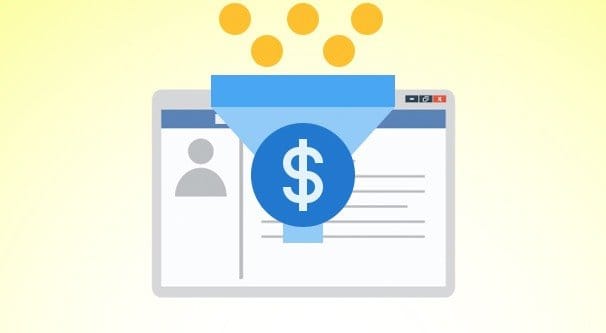
Facebook is a great tool for selling your products, even if you’re not setting up a direct storefront. Between ads, organic posts, shares, and apps, you have a wide variety of options for increasing your sales. I’ve compiled a bunch of them, so let’s dive right in.
Audience Creation
A key element of good Facebook marketing is targeting the right audience. You need to make use of targeting both for paid ads and for organic posts. That’s right; you can use targeting options for non-promoted posts as well. Get to it!
1. Create an Audience of Facebook Fans
One of the highest converting audiences on Facebook is just “the group of people who follow you.” You don’t have to worry about the onboarding process, on awareness, or on attracting them in the first place.
You already have their attention and they know who you are, so all you have to do is convince them now is the right time to buy.
2. Create an Audience of Website Visitors
Various custom audiences can be put together using the Facebook website pixel. You can market directly to anyone who has visited your website, or anyone who has visited your pricing page, a specific landing page, or even your order confirmation page. AdEspresso has an excellent guide on a bunch of different custom audiences here.
3. Create a Lookalike Audience
A lookalike audience is one that’s made up of people that share many common traits with another audience. For example, you can make an audience of people who resemble the people who follow you, and pay for some ads to target those people to get them to follow you. Chances are pretty good that they’ll do so, since they share traits with people who already do.
Using Paid Ads
If you have the money, you have the power. Paying for exposure through ads is one of the best ways to close deals, generate leads, and broaden awareness of your business. There are a lot of tricks to it, more than I can cover here, but this should get you started.
5. Advertise Your Product Directly
Sometimes the most effective strategy is the simplest. Just make an ad that promotes your product.
Choose the right audience and market to them with the benefits of your product most relevant to them, and you should get a pretty decent response.
6. Advertise a Goodie to Boost a Mailing List
Giving away free stuff is probably the most effective single strategy you can use. People love free stuff, even if they wouldn’t otherwise use it. I know I have a collection of ebooks and other goodies I wouldn’t have thought to buy, but enjoy since I claimed them for free. As a result, I’ve found a few good mailing lists. Capture these people and market to them in other channels.
7. Advertise Multiple Products with Carousel Ads
Facebook’s carousel ads showcase multiple products – or multiple features of the same product – using multiple images in a sort of slideshow.
Tantalizing half-images and half-captions encourage the user to click from one to the next, and you’re able to showcase multiple facets of your product or store where you would otherwise have to choose just one.
8. Experiment with Short Video Ads
Facebook has been pushing video pretty hard in the last few years, trying to compete with YouTube. Video ads are little more than Vines, but can be pretty effective at showcasing your product or your service in a short amount of time. A picture is worth a thousand words, and videos are made up of a lot of little pictures. However, don’t try this if you don’t have the ability or the funds to produce a high quality video, short as it is.
9. Keep Your Ad Copy Honest
Younger people tend to mistrust traditional advertising, in startlingly high percentages. Exaggerating or outright lying about your product will see you quickly called out and can earn you a reputation that will take years of upright work to get rid of. Even then, some brands have completely turned around but still struggle because of rumors from years ago. It’s better to be honest, up-front, and matter-of-fact about your product and your advertising. Casual is better when it comes to the younger generations.
10. Use High Quality Images
It’s well worth your time to get some good, high quality images of your product or service for use in your advertising. Hire a professional photographer to make them for you, and don’t skimp on paying them. These images will have a lot of return on your investment.
11. Relentlessly Split Test Advertising
Split testing is the core of every good marketing program. Try out different variations on targeting, different images, different text, and different landing pages. Any aspect of the ad you can change, try a different version and iterate to see what works best. You can read all about split testing Facebook ads here.
Organic Facebook Interaction
Don’t forget: Facebook is about more than just paid advertising. Organic posts and interaction have a very important role to play, and you need to cover all of your bases. Don’t get caught trying to replace interaction with more ad spend; it just won’t work.
12. Provide Fast and Effective Customer Service
There are two main benefits to this. Firstly, effective customer service prevents on-the-edge customers from leaving and makes them satisfied customers.
It can minimize negative reviews, boost positive reviews, and earn you a reputation for solving problems. The second benefit is on Facebook itself; they have a “typically responds within X time” metric that’s publicly visible. The faster and more appropriately you respond, the better this metric will be.
13. Run Store and Social Cross Promotions
One fun way to build audiences and earn more customers is to cross-promote between your physical location and your online presence. Give out online-only coupons in-store, or give out store-only coupons online. Get people to follow you for discounts, and put up an interstitial on store WiFi to deliver a deal when someone logs on then and there. You have a lot of ways to do this, so experiment.
14. Engage With Real Facebook Users
The value of paying attention to your organic marketing cannot be overstated. When you read and respond to customer posts – and not just their complaints and reviews – you build a lot of benefit with your customer base. They feel like they can come to you with problems and they’ll trust you more when you’re casual.
15. Share and Boost Customer Testimonials
When customers leave positive reviews, ask them if you can “share it with the class” so to speak. You can copy their quote with attribution and post it as an organic post.
You can add it over an image of the product with a product link, and you can even make a game out of it. Each week, a randomly selected testimonial will win a prize, be it a gift card, a discount, or an add-on product or service. It encourages more reviews and it expands your audience.
16. Share Excellent Organic Content
Don’t forget to fill your organic feed with high quality posts. Testimonials and advertising are one thing, but you should share blog posts, industry news, community news, and anything else that can be of value to your users. Keep your advertising minimal; organic posts are for sharing the wealth, not for convincing people to convert.
17. Run Contests with Compelling, Relevant Prizes
Facebook has a lot of guidelines for contests, and there are some best practices that you should follow for most effective contests. My number one piece of advice is to give out something only people interested in your company or product would want. A camera shop can give out a tripod or a lens, never a smartphone. Why? A smartphone attracts people who just want a phone. A camera accessory attracts your target demographic of photographers.
Increase the Efficacy of Marketing
Every marketing technique can be expanded and made more potent with some tweaks, testing, and various marketing shenanigans. There’s more to good marketing than just implementation; you need to test and make sure you can keep making everything better.
18. Provide Multiple Contact Methods
If you want someone to buy, you need to make it easy for them to do so. Part of this means making it easy for them to answer their questions.
A FAQ might work, but you also need a phone number, email address, and even live chat if you want to answer the people who can’t help themselves. You can even experiment with Facebook’s new features involving interactive messenger chatbots.
19. Capture Abandoned Carts
I mentioned this in passing above, but one of the most valuable audiences you can capture is the group of people who get far enough in your process to add items to a card, but don’t go on to finish their purchase. It’s important to contact them both so that you can remind them of their cart and get a purchase, and so you can ask them what stopped them from making a purchase the first time. You might discover issues with your purchase process that need fixing.
20. Offer Time Sensitive Value
When there’s a sense of time pressure, people will make decisions to act before they would otherwise be ready. Time-sensitive discounts are the most obvious way – it’s why Black Friday exists – but you can also use quantity-limited offers through Facebook itself.
21. Limit Customer Choice
Believe it or not, when the user only has to choose between two or three options, they’re more likely to make a purchase than if you give them ten different options where one is guaranteed to fit them. It’s called decision paralysis, and it plays a very real effect on modern marketing.
22. Make It As Easy As Possible to Purchase
Every possible roadblock between a user finding you and the user completing a purchase must be minimized. This means everything from offering customized versions of your item with different colors all the way up to accepting as many different payment options as possible. Well, almost as many. I’d still be skeptical of Bitcoin and the other digital currencies if I were you. You still have to cash them out yourself, and that can be distressingly difficult.
Facebook Marketing Technical Rules
Keep in mind that Facebook has their own rules, their own culture, and their own list of dos and don’ts. Make sure you know what you’re doing with regards to the rules, lest you meet inefficiency and higher costs head-on.
23. Maintain Messaging Congruity
A big part of the calculation that goes into your advertising reach and costs is how similar the messaging is between your ad and your landing page. If your ad offers a 10% discount, your landing page better offer than same discount. If you’re selling a stereo and your landing page is selling a full sized surround sound system, you might find your reach being curtailed.
24. Pay Attention to Text Limitations
The god-awful 20% text rule is a relic of history, but the amount of text you use in your ad images still has an effect.
It’s just a sliding scale now rather than outright rejection. Avoid using text in your ads, generally, and just use compelling pictures instead.
25. Pay Attention to Quality Score
The quality score for your Facebook ads considers a number of different factors and will affect your reach, your costs, and your ability to get future ads approved at all. Read this page in detail and make sure your ads are always on the good site, as much as possible. The occasional slip is fine, but don’t make a habit of it.
What are your protips for Facebook sales and marketing? I’m sure you have some I haven’t covered, so let me know in the comments.
